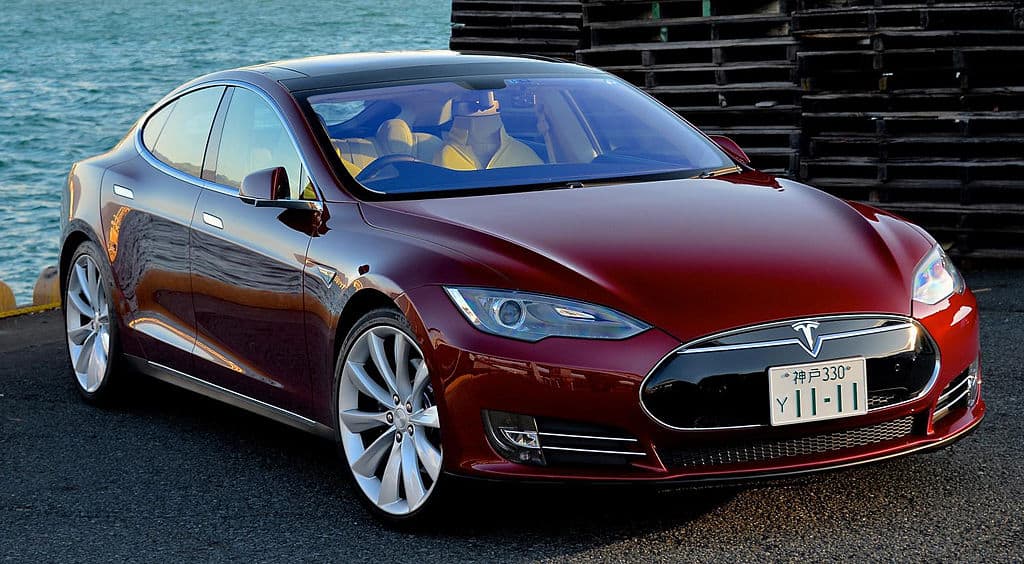27 January 2020 Concept Car
When it comes to EVs, we no longer need to dream about the future. It has already begun. In the UK, sales of electric cars are slowly but surely edging up. The world’s biggest brand, Volkswagen, has decided to relegate its petrol division to second tier and its upcoming ID.3 model easily met its target of 30,000 pre-prders. In Norway, almost half of all registered vehicles are electric. Certaintly, the showroom is not the only place where you’ll find a Nissan Leaf, a Renault ZOE or a Tesla!
The increasing popularity of EVs has brought both their pros and cons into sharper relief. When it comes to the latter, range remains a major obstacle for many potential buyers. Little wonder, then, that manufacturers are making the distance their cars can cover with one charge their top priority.
With petrol cars, range was hardly ever an issue. Cars have become more and more economical and thanks to a worldwide network of petrol stations, being stranded seemed like a thing of the past.
Although fuel efficiency was important, range was not a consideration for a petrol fueled vehicle or diesel. You simply assumed a car was adequate enough in this department and moved on to other criteria.
With EVs, this has suddenly changed completely. Factors like pleasure, space, build quality and safety are no longer the biggest concern. Instead, it’s all about the battery – and how far it can take you.
After all, the batteries in EVs are essentially just bigger versions of the ones built into smartphones. And who hasn’t been let down by their phone yet? The simple fact that we all know from personal experience how quickly a battery can go empty has added to the worry of an EV running empty.
These fears are not entirely ungrounded. But they’re certainly blown way out of proportion. Consider this: Most EVs these days easily make 200 miles on one charge. Even cheap, older models should get you 80 miles. At the same time, the average daily drive is 40 miles long.
Add to this that batteries are quickly becoming a lot more efficient and new charging stations are added to the grid daily and there’s really not a whole lot to worry about.

Over the past year, manufacturers have made some remarkable progress in terms of the range of their EVs. Today, the top models rival the range of petrol cars or actually exceed it. To compare, a Volkwagen Golf has a range of somewhere between 300 and 400 kimotres. Compare that to the following list of the EVs with the best range, as provided by driving.co.uk:
1 Tesla Model S Range: 280-375 miles
2 Volkswagen ID.3 Range: 205-341 miles (claimed)
3 Tesla Model 3 Range: 258-329 miles
4 Tesla Model X Range: 230-315 miles
5 Polestar 2 Range: Up to 310 miles
6 Jaguar I-Pace Range: Up to 292 miles
7 Kia e-Niro Range: Up to 282 miles
9 Mercedes-Benz EQC Range: 259 miles
10 Audi e-tron Range: More than 249 miles
Not all of these cars are available to the public yet. But many will be over the next year or so. By then, there will be plenty of great, and mostly affordable EV options at your disposal.
… and that’s that you probably shouldn’t trust all of these numbers. Already with petrol cars, there has always been a pretty big gap between the performance numbers provided by manufacturers and the actual performance of the car on the road. Since range is such a volatile issue for many drivers, this issue has seemingly become even more pressing when it comes to EVs.
Recently, therefore, the EU has forced car makers to publish more reliable data. As Green Car Reports reports, the results were quite shocking:
“British auto magazine Car noted in a May report that current labels can be inflated by as much as 25 percent. The new WLTP tests will cover longer routes (14.4 miles over 30 minutes vs 6.8 miles over 20 minutes on the old NEDC tests), at higher speeds (up to 81.3 mph from 75 mph), and at more consistent temperatures to even out air conditioning loads. Considering electric-car range estimates, for example, the 2018 Nissan Leaf gets a 151-mile range rating from the EPA. Under old European standards, it was estimated at 235.5 miles of range. Under the WLTP tests, it is expected to be rated at 167.7 miles.”
Although the classic lithium-ion battery can be improved, it can only go so far. Are we in need of help from above? Some scientists seem to think so …

Somewhere in Japan, two of the country’s biggest electronics companies are working on an experiment that could change the world. Not only are they planning on making the lithium-ion battery obsolete. They’re building a car that would be entirely independent from any stationary chargers. In short: A car that could drive forever.
Supported by the government, Toyota and Sharp are exploring the outer limits of solar technology. Although still in name and outward appearance a Prius, the vehicle they’ve come up with has very little in common with its popular namesake. The roof of the car is plastered with highly advanced solar panels, which convert the heat into energy and then transfer it onto the car’s state of the art batteries.
The idea is clear: The car charges while you’re driving during the daytime. At night, it can then fall back on its power reserves. Videos which show the car navigating a test course are promising.
So when should you start looking for the Solar Prius at Toyota dealerships? The developers are the first to admit that this will take time. In fact, they currently estimate that the technology will not become available for mass markets over the next decade.
The reason is that solar energy does not as yet convert into energy efficiently enough to make the Solar Prius a competetive ride. As the videos seem to demonstrate, it is not very fast – an agile pedestrian could well overtake it. And its maximum range currently stands at just over 55 kilometres.
These numbers are a spectacular improvement over the charging capacities of the popular Prius Plug in Hybrid. Solar conversion rate has gone up by 50%, electrical output by a factor of 5, the driving range by 2700%! And yet, compared to competing EVs on the market, these numbers are still far too low.
The Prius project is taking a purist approach by taking stationary chargers out of the equation. That may be impressive in theory, but may ultimately turn out to be the downfall of the endeavour.
In the Netherlands, forever a country with a pragmatic outlook, a group of students wanted tangible results quicker. To their mind, the story of the EV has always been one of fusions and hybrids. The first iteration of the Prius was one of the biggest step the industry has taken so far and its was based on a hybrid concept of petrol and battery.
The Lightyear One wants to be for the integration of solar energy what the Prius was to the advancement of lithium-ion batteries. Right after Tesla’s groundbreaking first models, which turned full-on EVs into a mainstream product, this may well be the next big thing on the scene.

Admittedly, the Lightyear One isn’t cheap. It currently sells at €119,000, which is obviously way out of the league of 99% of drivers in the UK. That said, according to the developers, 100 Lightyears have already been sold. That may not be quite as much as the VW ID.3’s aforementioned 30,000. But it isn’t anything to sneeze at either.
So what makes the Lightyear One so special? For one, it fuses the progressive solar panel approach of the Prius with the conventional battery approach. In practise, this simply means you charge the Lightyear at any regular charging station before beginning your journey. Then, as you start to drive, the car will use its roof to stay charged.
The Lightyear can not, as yet, replenish itself completely through its solar panels. So you will eventually have to take a break to recharge its batteries. Thanks to the combination of solar energy and electric power, however, range is significantly expanded. According to unverified data from the manufacturer, this should allow you to go at least 500 kilometres on one charge – quite a bit more than the current generation of regular EVs.
The Lightyear One could be a gamechanger. As technology improves, follow-up models with better solar panels may well up the ante on the range. Also, its design, while a question of taste, is genuinely different and reminiscent of the classic Citroëns from the 70s and 80s, which still look iconic and fresh today.
What’s more, although €119,000 obviously sounds insane, the price is actually not as astronomical as it may seem. Tesla’s top model, the Tesla S, is almost exactly as expensive – although it also has a lot more extras to make up for that.
The main problem of the Lightyear one so far has been its delay. The team around Lex Hoofsloot already promised the car for 2018 but had to push that date back to 2021. By that time, of course, the market may look very different from today. And the Lightyear One may no longer be quite as exciting as it appears today.
One reason is that any revolutionary technology these days doesn’t only compete with other progressive concepts. It also competes with more traditional battery solutions, which are also still getting better. Tesla, for example, on the basis of its decade-long experience, has been able to raise the range of their cars just by stubbornly improving their battery technology. Contrary to many competitors’ models, Teslas make full use of a charge, whereas the batteries of many other brands stop at 88%-94%.
EVs are also becoming lighter, which further reduces the energy required to move them.
And yet, even Tesla’s technology pales in comparison with a new battery developed in Switzerland. Small start-up Innolith claims that its technology reaches an energy density of 1,000 Wh/kg. This means that a car using it would come with a range of around 1,000 kilometres / 621 miles. If Innolith can make true on its claims, this would completely turn the market upside down.
Innolith is still using lithium-ion technology. Just imagine what’s in store for us when superiod solid-state batteries enter the picture.

For the time being, quite a lot of what we’ve written about is still in the future – or simply far too expensive for the average household. Fortunately, this doesn’t mean you’ll have to sit on your hands and wait for these technologies. Instead, there are quite a few steps you can take to easily improve the range of your EV yourself:
As with any regular petrol engine (even those on premium petrol to save on fuel), EVs, too, consume less energy if you drive them more gently. Speeding up quickly, especially, as tempting as it may be in an EV, will quickly deplete your batteries. Instead, accelerate slowy and try to avoid extreme speed peaks and troughs.
Obviously, the faster you go, the more strain you’ll put on your battery. Again, this isn’t rocket science and something you should be familiar with from your petrol days. So, if you can, keep your foot from slamming the accelerator and take it easy.
Finally, break as little as possible. Especially with an EV, use regenerative breaking, which actually recovers energy instead of wasting it on breaking.
Heating and airconditioning are among the biggest causes for rapid battery depletion in an EV. On top of that, very cold or very hot weather already puts a strain on the batteries. So, in effect, your ressources are being doubly taxed.
Obviously, if you’re really suffering from bad weather conditions, there is not an awful lot you can do. However, whenever possible, try to use the heated seats and steering wheel instead of cranking up the heater. This at least will help you save energy, before manufacturers have found a way to make climate control within cars more efficient.
And while you’re at it, try to keep your car as light as possible. Any superflous luggage adds to the electricity bill and reduces your range. As an additional bonus, it also helps to keep your car clean.
Range will continue to be a point of contention for EVs for a while, justified or not. While we wait for a breakthrough technology, maybe a different perspective can put a new spin on the topic. In a personal account on finance magazine Forbes, Brad Templeton writes:
“I personally have done several trips off the supercharger network with the mid-range. This has sometimes called for finding hotels with charging for the overnight stays, or even doing level 1 charging at hotels that have only a regular plug. This is a hassle, but also an adventure.”
It may not always be comfortable to drive an EV in these still early years of the technology. But at least we’ll have some stories to tell to our children later in life.
27 January 2020 Concept Car